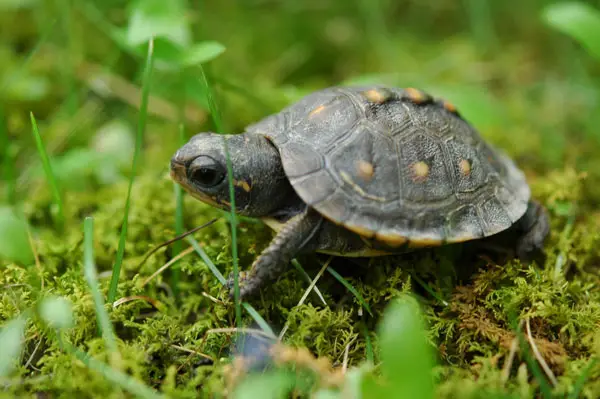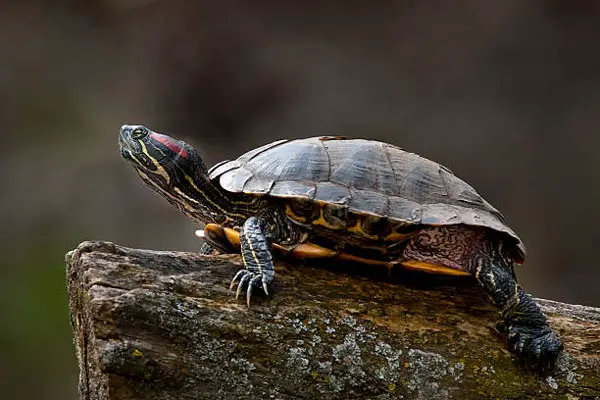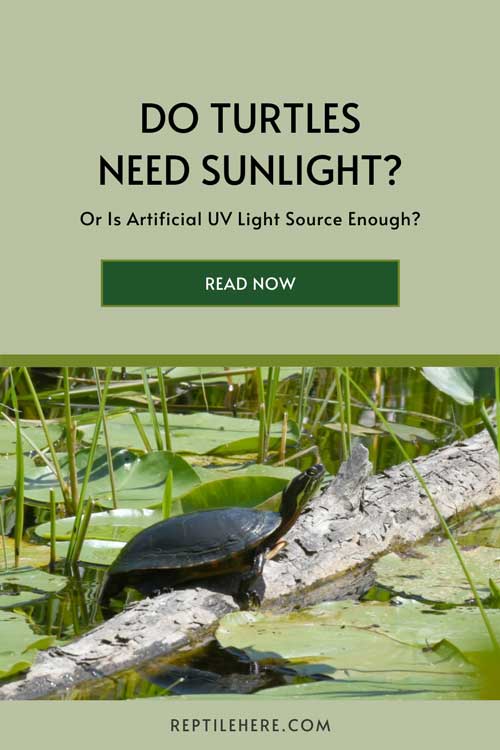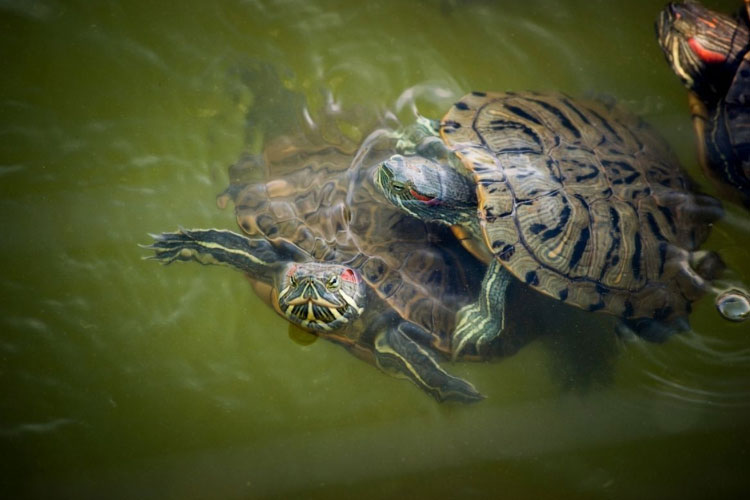Do Turtles Need Sunlight? Or Is Artificial UV Light Source Enough?
UV light helps the turtle absorb dietary calcium by producing the necessary vitamin D3 that can aid its shell and bone growth. Many turtle owners rely on artificial UV light sources instead of direct sunlight.
But do turtles need sunlight? Turtles need sunlight and should be given if the owners can manage time to take them out in the sun with all the precautions. Since it requires strict supervision, many prefer using artificial UV lights instead of direct sunlight. But turtles are habituated to taking sun baths while basking, and it’s natural for them to consume UVB rays directly.
It helps their body temperature regulation, vitamin D3 production, calcium absorption, and overall metabolism regulation. Since the benefits of sunlight are hard to replicate completely, it’s better to take your turtle out in the sun whenever possible. But what if you can’t? To what extent does an artificial UV lamp replicate all these benefits? Let’s find out.
Do Turtles Need Sunlight? Why?
Contents
There are many crucial reasons why turtles need direct sunlight, and we’ve discussed them in detail below. Check them out here.

Body Temperature Regulation
Turtles are cold-blooded (ectothermic) animals that can’t regulate their body temperature independently. So their metabolism starts when they go out in the sun and warm themselves up. Sunlight is also essential for their metabolism regulation and nutrient absorption, aiding their steady growth.
UVB Absorption for Vitamin D3
Turtles need both UVA and UVB rays that come from sunlight. While UVA ray helps turtles with their breeding and regular activities, the UVB ensures calcium absorption.

Exposure to UVB is particularly important here as calcium is a must-need for their bone, shell, and overall skeletal development. UVB rays produce vitamin D in the body and convert it into Vitamin D3. The vitamin D3 then helps the body process and utilize the calcium ingested through food. It also limits phosphate that blocks calcium absorption.
Circadian Rhythm Regulation
Every living being follows a circadian rhythm which helps them regulate days and nights to function correctly. It’s based on light, and there’s no exception for the turtles.
The sunlight helps them maintain the circadian rhythm; if disrupted, they’ll be deprived of sleep and other normal functions. It’ll impact their mental health as well as their physical immunity. So they should be exposed to sunlight or other UV light sources for around 10 to 12 hours daily.
Prevent the Growth of Germs
Although turtles spend more of their time in the water, they need to be entirely dried out at some point in the day. Continuous wet conditions can promote the growth of fungus and algae in its shell, leading to shell rot disease if left untreated.
Problems Associated with the Lack of Heat & UV Light Exposure for Turtles
You must ensure your turtle gets enough exposure to UVA, especially UVB, from direct sunlight or artificial UV lamps. Besides, the heat coming from these sources is also vital for their overall health. The lack of UV light and heat will cause the following problems in turtles:

- Without light and heat, their basking sessions will be interrupted, affecting their nutrient absorption, metabolism, and other body functioning.
- Without getting enough heat and warming themselves, turtles can’t regulate their internal body temperature and may suffer from respiratory illness.
- The lack of UVB can create vitamin D3 and, eventually, calcium deficiency, leading to different diseases, including metabolic bone disease, anorexia, abnormal shell development, and egg-binding.
- The lack of heat and light increases the chance of bacterial and parasitic infection in the turtle shell.
- Turtles exposed to UV lights less frequently or in low heat are more prone to regrowth of tumors. Research even suggests turtles that have undergone tumor surgery have a better chance of recovery when exposed to greater sunlight.
How to Take Pet Turtles Out in the Sun & for How Long?
You generally have a basking area inside the tank for an indoor turtle with a UV lamp to provide heat and UVB rays. But since indoor heat lamps can’t entirely replicate the sunlight, you should take your turtle outside in the sun sparingly.

While taking your turtle in the sun, there are a few precautions you need to follow:
- Don’t put the glass or plastic tanks under direct sunlight as they can block the UV rays and also get overheated quickly
- Never leave the turtle unmonitored and be watchful where they’re
- Fence the area you’re letting them bask
- Don’t have other pets or humans walking around while they’re out
- Ensure they have access to both sunny spots and shades, so they can take shelter when feeling too hot
- Don’t let them out when the sun isn’t shining enough, shining too much, or when it’s raining
- It’s best to let them out in the sun in a moderate temperature range (7- to 90F)
- Ensure the basking area is free of natural hazards like chemicals, animal waste, or other such things
- Don’t take baby or hatchling turtles to bask outside
Now you need to know how often you can take the pet turtle from the tank to the sunlight and how long each session should last.
If you’ve got an indoor turtle at least one-year-old, you should get them out in the sunlight once or twice a week and not more than that. Because taking them in and out of the tank too often can impact their immunity.

And each session can last anywhere around 30 minutes to 2 hours. But since supervising them isn’t easy, you can keep it to as minimum as possible.
If you can take them under direct sunlight with all the precautions, they’ll have vitamin D produced in the body, which will help them absorb calcium better. As a result, they’ll have stronger bones, shells, and skeletal structures. Besides, they’ll get to bask in a more natural environment.
Also read: Can You Drown a Turtle?
Can Artificial UV Lamps Replace Sunlight? If So, How to Use them?
Nothing can fully substitute the benefits of UVB rays coming from sunlight. However, turtles are good survivors and can manage even with not-so-natural UV lights. And that paves the way for artificial UV light sources for turtles in tanks or aquariums.
The problem with the turtles in captivity is that they don’t have the strong immunity as the ones in the wild. So taking them out too often can impact their immunity.
Generally, you need a basking area inside the turtle tank and a UV Heat Lamp for indoor turtles. It’ll act as an alternative to the sunlight for these turtles.

UVB lamps are available with 2.5% to 10% for pet turtles and tortoises that provide UVB rays and replicate the benefits of sunlight to a decent extent. Experts suggest using 2.5% UVB lamps for aquatic turtles around 12 inches and 5% UVB lamps for turtles around 18 inches. On the other hand, 10% UVB lamps are known as desert UVBs and are used for tortoise and desert-dwelling reptiles.
While using the artificial UVB lamps, take care of the following things below:
- Use a suitable cover or screen under the light or above the tank so it doesn’t block much UVB rays yet protects turtles from accidents.
- For adequate UV light, keep it on for around 10 to 12 hours daily and match it with the natural daytime. You can switch it off at night to let your turtle sleep.
- Buy a higher UVB lamp to compensate for the blocked light.
- Always place the UVB lamp at the proper distance (10 to 20 inches from the basking area) and point to the basking area. So your turtle gets enough of the UVB light.
FAQs
Let’s get some common FAQs answered here.
A turtle can go up to two weeks without getting exposed to sunlight or artificial UV lights. But after that, you’ll most likely see their health deteriorating.
Captive turtles can get too much UV, so you should place them around a shade where they can take shelter when it is too hot. Turtles having UV bulbs around the tank will get into the water when they think it’s too much for them.
Related: Do Turtles Need A Heat Lamp At Night?
Final Words
The UV rays, especially UVB from sunlight, are as good as a healthy diet for your pet turtle. Although pet turtles need sunlight for its immense benefits, it is challenging to take it out in the backyard as turtles can escape, hide, or get hunted. Putting them under sunlight in a plastic or glass box isn’t a solution either, as they block light and get overheated. But with precautions and strict monitoring, you can let it bask in the sun and help acquire the benefits.
However, many owners find it hassling and prefer using artificial UV lamps as they can produce UVB rays and heat required for turtles to a reasonable extent. So take your turtle to bask in the sunlight if possible. Otherwise, get a good UV lamp and use it according to guidelines. Either way, you’ve to ensure vitamin D3 production, calcium absorption, body temperature regulation, and overall health improvement of your turtle.


